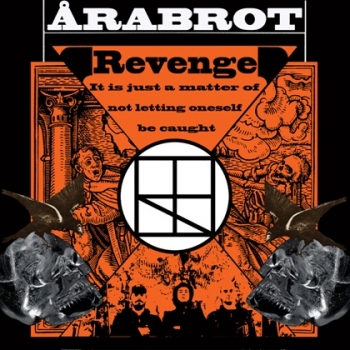
By Tate Bengtson
It is almost surprising that it has taken so long for the occult hard rock and freak-folk movements of the late 60s to catch on among metalheads, but the time has seemingly arrived. Then again, perhaps it is the nature of this style of music to be untimely always (and evermore), and thus never in lockstep with contemporary tastes. Given the style’s musical glorification of the eccentric and bizarre side of the occult (in contrast to the more straightforward brand dominant in heavy metal), this should come as no great surprise.
While the most prominent example of this second coming may be Cathedral’s sprawling opus of olde tyme psychosis, The Guessing Game, bands such as Blood Ceremony, Jex Thoth, and The Devil’s Blood are among a new crop of bands celebrating the earliest attempts to blend hard rock and Old Scratch. With references ranging from the obvious (Thin Lizzy, Blue Oyster Cult) to the obscure (Coven, Black Widow) to the cult (Pagan Altar, Manilla Road), it is evident that The Devil’s Blood has a firm grasp on its precursors. It is the band’s ability to synthesize such a range of influences into a coherent, distinct whole that stands as its most impressive quality.
Much like those bands that inspired The Devil’s Blood, the latter conjures an unsettling atmosphere offset by a compelling catchiness. The result is the best kind of horror: the kind where you cannot look away, where you are drawn into a web knowing that something ominous lurks nearby. This is a horror reliant upon attraction rather than repulsion to accomplish its objective. Thus, we have lyrics rejoicing the left hand path delivered by a voice that is uncanny yet infectious, stuck between Grace Slick and King Diamond, sounding like a disembodied apparition taunting the living with playful curses made frightful by mere ghastly utterance. Beneath this menacing merriment, twin guitars, recorded with a clarity and sense of space recalling the finest guitar duos of the early 70s, deliver melodies that are expressive and even poignant. Much like Blue Oyster Cult, The Devil’s Blood is cognizant of how to use the “less is more” formula effectively.
What makes The Devil’s Blood successful is its masterful gift for restraint. The band knows how to hold back, painting a partial musical portrait consisting solely of shadows and allowing the listener to infer the details using that most horrifying of artists: the imagination. This quality is best shown on “The Yonder Beckons,” a track that, though deceptively complex in structure and idea, uses unadorned components in order to charm the ear.
Elsewhere, the band demonstrates its ability to apply its chosen sound to different formats, as heard on the hypnotic “Angel’s Prayer.” Here, a gently swinging rhythm and spellbinding vocal captivates the attention while a twin axe attack blends with picked acoustic guitar. In sharp contrast, next cut “Feeding the Fire with Tears and Blood” alternates between rhythm-driven verses and one of the more intricate guitar patterns on the album, smartly using variations in note density to bring the guitar work into sharp relief.
The album concludes with the striking “The Anti-Kosmik Magick,” which is a powerful affirmation of The Devil’s Blood’s musical and ideological allegiance. While all of the key elements are in play – the driving rhythms, the supernatural vocals, the twin guitars – the band takes it to the next level with an extended composition that permits it to revel in the haunting atmosphere at length. The song also makes apparent a previously obscure fact: the remarkable economy of the band’s songwriting throughout the album. It does not become apparent until faced with such a long track – majestic though it may be – that one of the band’s strongest qualities is its ability to craft a song that wastes next to nothing. This is in sharp contrast to the usual preoccupation of this style of music, most recently exemplified by Cathedral’s aforementioned The Guessing Game, to indulge in bizarre freak-outs that occasionally become overextended. While The Devil’s Blood plays uncharacteristically straight in this regard, the trade-off of eccentricity for economy works in its favour.
In the interest of full disclosure, I must admit that I am a sucker for 70s nostalgia, provided it is done with sincerity. However, I would argue that The Time of No Time Evermore is far from a simple imitation of the past; The Devil’s Blood is effective precisely because it manages to put a new twist on an old sound by synthesizing disparate elements into something that sounds new…yet disturbingly familiar.
(Ván)


